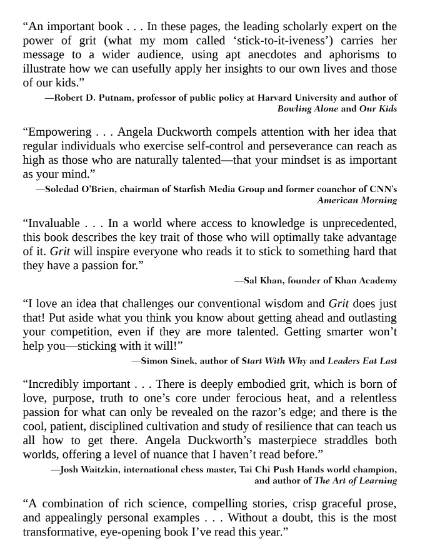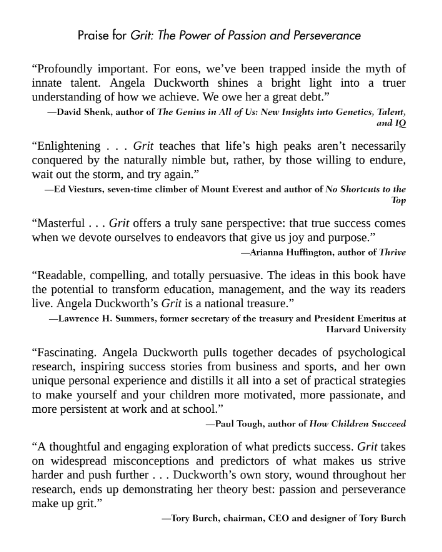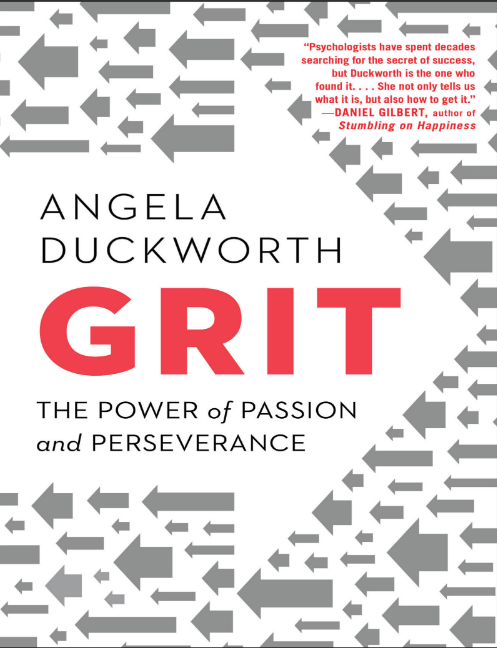


Soon after learning about Beast, I found my way to the office of Mike Matthews, a military psychologist who’s been a West Point faculty member for years. Mike explained that the West Point admissions process successfully identified men and women who had the potential to thrive there. In particular, admissions staff calculate for each applicant something called the Whole Candidate Score, a weighted average of SAT or ACT exam scores, high school rank adjusted for the number of students in the applicant’s graduating class, expert appraisals of leadership potential, and performance on objective measures of physical fitness. You can think of the Whole Candidate Score as West Point’s best guess at how much talent applicants have for the diverse rigors of its four-year program. In other words, it’s an estimate of how easily cadets will master the many skills required of a military leader.
From his own experience joining the air force as a young man, Mike had a clue to the riddle. While the rigors of his induction weren’t quite as harrowing as those of West Point, there were notable similarities. The most important were challenges that exceeded current skills. For the first time in their lives, Mike and the other recruits were being asked, on an hourly basis, to do things they couldn’t yet do. “Within two weeks,” Mike recalls, “I was tired, lonely.
Around that time, it wasn’t just Mike Matthews who was talking to me about this kind of hang-in-there posture toward challenge. As a graduate student just beginning to probe the psychology of success, I was interviewing leaders in business, art, athletics, journalism, academia, medicine, and law: Who are the people at the very top of your field? What are they like? What do you think makes them special? Some of the characteristics that emerged in these interviews were very field-specific. For instance, more than one businessperson mentioned an appetite for taking financial risks: “You’ve got to be able to make calculated decisions about millions of dollars and still go to sleep at night.” But this seemed entirely beside the point for artists, who instead mentioned a drive to create: “I like making stuff. I don’t know why, but I do.” In contrast, athletes mentioned a different kind of motivation, one driven by the thrill of victory: “Winners love to go head-to-head with other people. Winners hate losing.” In addition to these particulars, there emerged certain commonalities, and they were what interested me most. No matter the field, the most successful people were lucky and talented. I’d heard that before, and I didn’t doubt it.
PREFACE
It has now been close to thirty years since I began writing the first edition of A Random Walk Down Wall Street. The message of the original edition was a very simple one: Investors would be far better off buying and holding an index fund than attempting to buy and sell individual securities or actively managed mutual funds. I boldly stated that buying and holding all the stocks in a broad, stock-market average as index funds do was likely to outperform professionally managed funds whose high expense charges and large trading costs detract substantially from investment returns.
Now, some thirty years later, I believe even more strongly in that original thesis, and there’s more than a six-figure gain to prove it. The chart on the following page makes the case with great simplicity. It shows how an investor with $10,000 at the start of 1969 would have fared investing in a Standard & Poor’s 500-Stock Index Fund. For comparison, the results are also plotted for a second investor who instead purchased shares in the average actively managed fund. The difference is dramatic. Through June 30, 1998, the index investor was ahead by almost $140,000, with her original $10,000 increasing thirty-to-one fold to $311,000. And the index returns were calculated after deducting the typical expenses (2/10 of 1 percent) charged for running an index fund.
Why then a seventh edition of this book? If the basic message hasn’t changed, what has? The answer is that there have been enormous changes in the financial instruments available to the public. A book meant to provide a comprehensive investment guide for individual investors needs to be updated to cover the full range of investment products available. In addition, investors can benefit from a critical analysis of the wealth of new information provided by academic researchers and market professionals made comprehensible in prose accessible to everyone with an interest in investing. There have been so many bewildering claims about the stock market that it’s important to have a book that sets the record straight.
Over the past quarter century, we have become accustomed to accepting the rapid pace of technological change in our physical environment. Innovations such as cellular and video telephones, cable television, compact discs, microwave ovens, laptop computers, the Internet, e-mail, and new medical advances from organ transplants and laser surgery to nonsurgical methods of treating kidney stones and unclogging arteries have materially affected the way we live. Financial innovation over the same period has been equally rapid. In 1973, when thenfirst edition of this book appeared, we did not have money market funds, NOW accounts, ATMs, index mutual funds, equity-exempt-tax funds, emerging-market funds, floating-rate notes, inflation protection securities, tax-exit REITs, Roth IRAs, zerocoupon bonds, S&P index futures and options, and new trading techniques such as “portfolio insurance” and “program trading,” just to mention a few of the changes that have occurred in the financial environment. Much of the new material in this book has been included to explain these financial innovations and to show how you as a consumer can benefit from them.
This edition takes a hard look at the basic thesis of earlier editions of Random Walk that the market prices stocks so efficiently that a blindfolded chimpanzee throwing darts at the Wall Street Journal can select a portfolio that performs as well as those managed by the experts. Through the past thirty years that thesis has held up remarkably well. More than two-thirds of professional portfolio managers have been outperformed by the unmanaged S&P 500-Stock Index. Nevertheless, a number of studies by academics and practitioners, completed during the 1980s and 1990s, have cast doubts on the validity of the theory. And the stock market crash of October 1987 raised further questions concerning the vaunted efficiency of the market. This edition explains the recent controversy and reexamines the claim that it’s possible to “beat the market.” I conclude that reports of the death of the efficient-market theory are vastly exaggerated. Will, however, review the evidence on a number of techniques of stock selection that are believed to tilt the odds of success in favor of the individual investor.
The book remains fundamentally a readable investment guide for individual investors. As I have counseled individuals and families about financial strategy, it has become increasingly clear to me that one’s capacity for risk bearing depends importantly upon one’s age and ability to earn income from non-investment sources. It is also the case that the risk involved in most investments decreases with the length of time the investment can be held. For these reasons, optimal investment strategies must be age related. Chapter Thirteen, entitled “A Life-Cycle Guide to Investing,” should prove very helpful to people of all ages. This chapter alone is worth the cost of a high-priced appointment with a personal financial adviser.
Finally, the facts and figures in the book have been completely


